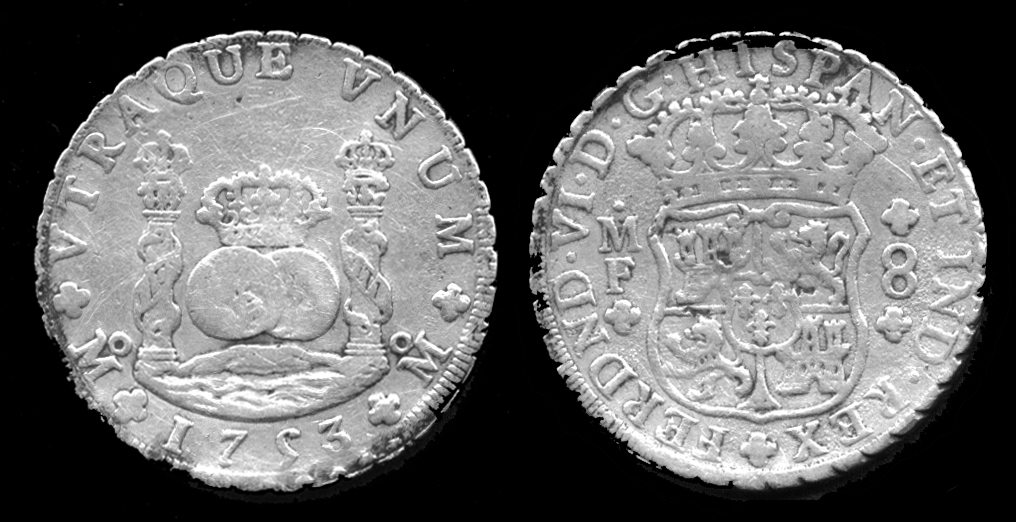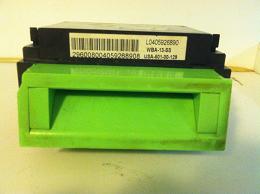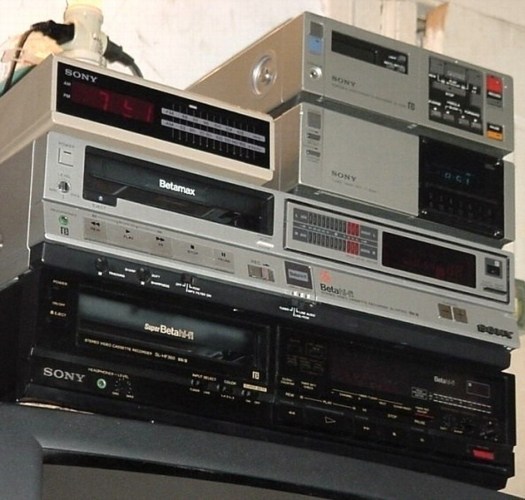|
United States $1 Coin Act Of 1997
The United States $1 Coin Act of 1997 (part of ) was legislation passed by the United States Congress providing for a redesigned gold colored coin with a distinctive new rim. A major purpose of the Act was to allow for the replacement of the Susan B. Anthony dollar. The stockpiles of that coin had been depleted to the point that minting new coins would soon be required. The Sacagawea dollar was introduced as a result of the Act. Debate On October 21, 1997, Congress held hearings on the Act. The most contentious issue was whether or not to amend the Act to mandate phasing out the U.S. one-dollar bill. Rep. Jim Kolbe attributed the Susan B. Anthony dollar's failure to the fact that it looked and felt like the quarter and the simultaneous circulation of the dollar bill. Kolbe recommended phasing out the paper dollar, warning that the Sacagawea would face the same fate as its predecessor if the bill remained in circulation. He refuted his opponents arguments that forcing a switch from ... [...More Info...] [...Related Items...] OR: [Wikipedia] [Google] [Baidu] |
United States Congress
The United States Congress is the legislature of the federal government of the United States. It is bicameral, composed of a lower body, the House of Representatives, and an upper body, the Senate. It meets in the U.S. Capitol in Washington, D.C. Senators and representatives are chosen through direct election, though vacancies in the Senate may be filled by a governor's appointment. Congress has 535 voting members: 100 senators and 435 representatives. The U.S. vice president has a vote in the Senate only when senators are evenly divided. The House of Representatives has six non-voting members. The sitting of a Congress is for a two-year term, at present, beginning every other January. Elections are held every even-numbered year on Election Day. The members of the House of Representatives are elected for the two-year term of a Congress. The Reapportionment Act of 1929 establishes that there be 435 representatives and the Uniform Congressional Redistricting Act requires ... [...More Info...] [...Related Items...] OR: [Wikipedia] [Google] [Baidu] |
Seigniorage
Seigniorage , also spelled seignorage or seigneurage (from the Old French ''seigneuriage'', "right of the lord (''seigneur'') to mint money"), is the difference between the value of money and the cost to produce and distribute it. The term can be applied in two ways: * Seigniorage derived from specie (metal coins) is a tax added to the total cost of a coin (metal content and production costs) that a customer of the mint had to pay, and which was sent to the sovereign of the political region. * Seigniorage derived from notes is more indirect; it is the difference between interest earned on securities acquired in exchange for banknotes and the cost of printing and distributing the notes. "Monetary seigniorage" is where sovereign-issued securities are exchanged for newly printed banknotes by a central bank, allowing the sovereign to "borrow" without needing to repay. Monetary seigniorage is sovereign revenue obtained through routine debt monetization, including expansion of the money ... [...More Info...] [...Related Items...] OR: [Wikipedia] [Google] [Baidu] |
Save The Greenback Act
The Save the Greenback Act was legislation proposed, but not passed, in the United States Congress in 1995 and 1997 forbidding the phase-out of the United States one-dollar bill. It stated simply, "Notwithstanding any other provision of law, the Secretary of the Treasury and the Board of Governors of the Federal Reserve System shall take such action as may be necessary to ensure that the number of Federal reserve notes in the denomination of $1 which are in circulation at any time does not decrease below the number of such reserve notes in circulation as of the date of the enactment of this Act." In a February 24, 1995 speech introducing the Save the Greenback Act, Rep. Thomas M. Davis gave several arguments against phasing out the one-dollar bill:http://thomas.loc.gov/cgi-bin/query/z?r104:H24FE5-609: *A great number of people's "pockets will be weighted down with heavy change instead of having a few bills tucked into their billfolds . . . one might suspect a conspiracy by clothing ... [...More Info...] [...Related Items...] OR: [Wikipedia] [Google] [Baidu] |
Presidential $1 Coin Program
Presidential dollar coins (authorized by ) are a series of Dollar coin (United States), United States dollar coins with engravings of relief portraits of U.S. presidents on the obverse and the Statue of Liberty (''Liberty Enlightening the World'') on the reverse. From 2007 to 2011, Presidential dollar coins were minted for circulation in large numbers, resulting in a large stockpile of unused $1 coins. From 2012 to 2016, new coins in the series were minted only for Coin collecting, collectors. A new coin was released on December 4, 2020, to honor George H. W. Bush, who died after the original program ended. Legislative history , the Presidential $1 Coin Act of 2005, was introduced on May 17, 2005, by Senator John E. Sununu with over 70 co-sponsors. It was reported favorably out of the U.S. Senate Committee on Banking, Housing, and Urban Affairs without amendment on July 29, 2005. The Senate passed it with a technical amendment (), by unanimous consent on November 18, 2005. The ... [...More Info...] [...Related Items...] OR: [Wikipedia] [Google] [Baidu] |
Dollar Coin (United States)
The dollar coin is a United States coin with a face value of one United States dollar. Dollar coins have been minted in the United States in gold, silver, and base metal versions. Dollar coins were first minted in the United States in 1794. While true gold dollars are no longer minted, the Sacagawea, Presidential, and American Innovation dollars are sometimes referred to as golden dollars because of their color. As with several other denominations of U.S. coinage, golden dollars are similar in diameter and color to their Canadian counterpart (known as the "loonie," which predates the Sacagawea dollar by thirteen years). However, unlike the 11-sided Canadian dollar coins, U.S. "golden dollar" coins are round. Dollar coins have never been popular in circulation since inception. Despite efforts by the government to promote their use to save the cost of printing one-dollar bills, such as the Presidential $1 Coin Program, most Americans currently use the bill. For this reason, sinc ... [...More Info...] [...Related Items...] OR: [Wikipedia] [Google] [Baidu] |
Currency Detector
A currency detector or currency validator is a device that determines whether notes or coins are genuine or counterfeit. These devices are used in a wide range of automated machines, such as retail kiosks, supermarket self checkout machines, arcade gaming machines, payphones, launderette washing machines, car park ticket machines, automatic fare collection machines, public transport ticket machines, and vending machines. The process involves examining the coins and/or notes that have been inserted into the machine, and conducts various tests to determine if the currency is counterfeit. Because the parameters are different for each coin or note, these currency acceptors must be correctly programmed for each item to be accepted. In normal operation, if any item such as a coin, banknote, card or ticket is accepted, it is retained within the machine and it falls into a storage container to allow a member of staff to collect it later when emptying the machine. If the item is reje ... [...More Info...] [...Related Items...] OR: [Wikipedia] [Google] [Baidu] |
Nashville, Tennessee
Nashville is the capital city of the U.S. state of Tennessee and the county seat, seat of Davidson County, Tennessee, Davidson County. With a population of 689,447 at the 2020 United States census, 2020 U.S. census, Nashville is the List of municipalities in Tennessee, most populous city in the state, List of United States cities by population, 21st most-populous city in the U.S., and the fourth most populous city in the southeastern United States, southeastern U.S. Located on the Cumberland River, the city is the center of the Nashville metropolitan area, which is one of the fastest growing in the nation. Named for Francis Nash, a general of the Continental Army during the American Revolutionary War, the city was founded in 1779. The city grew quickly due to its strategic location as a port on the Cumberland River and, in the 19th century, a railroad center. Nashville seceded with Tennessee during the American Civil War; in 1862 it was the first state capital in the Confederate ... [...More Info...] [...Related Items...] OR: [Wikipedia] [Google] [Baidu] |
Betamax
Betamax (also known as Beta, as in its logo) is a consumer-level analog recording and cassette format of magnetic tape for video, commonly known as a video cassette recorder. It was developed by Sony and was released in Japan on May 10, 1975, followed by the US in November of the same year. Betamax is widely considered to be obsolete, having lost the videotape format war which saw its closest rival, VHS, dominate most markets. Despite this, Betamax recorders continued to be manufactured and sold until August 2002, when Sony announced that they were discontinuing production of all remaining Betamax models. Sony continued to sell Betamax cassettes until March 2016. Original version Launch and early models The first Betamax device introduced in the United States was the LV-1901 console, which included a color monitor, and appeared in stores in early November 1975. The cassettes contain videotape in a design similar to that of the earlier, professional , U-matic format. L ... [...More Info...] [...Related Items...] OR: [Wikipedia] [Google] [Baidu] |
Coin Coalition
The Coin Coalition is an organization supporting the elimination of Penny (United States coin), pennies and dollar bills from U.S. currency. It is funded by vending machine companies, video-arcade owners, and the soft-drink industry, who all have an interest in eliminating maintenance costs associated with bill validators. The National Bulk Vendors Association supports the Coalition. Manufacturers converted machines to accept the Dollar coin (United States), dollar coin at great expense, but the unwillingness of the U.S. government to phase out the dollar bill prevented the coin from becoming popular. Although copper miners and other interest groups backed the Coin Coalition on this issue, they were unable to match the influence of Save the Greenback, a rival organization supporting continued dollar-bill production. In 1995, Tom Davis (Virginia politician), Tom Davis, introducing the Save the Greenback Act, warned that customers' pockets would be weighted down with heavy coins. ... [...More Info...] [...Related Items...] OR: [Wikipedia] [Google] [Baidu] |
Southeastern Pennsylvania Transportation Authority
The Southeastern Pennsylvania Transportation Authority (SEPTA) is a regional public transportation authority that operates bus, rapid transit, commuter rail, light rail, and electric trolleybus services for nearly 4 million people in five counties in and around Philadelphia, Pennsylvania. It also manages projects that maintain, replace and expand its infrastructure, facilities and vehicles. SEPTA is the major transit provider for Philadelphia and the counties of Delaware, Montgomery, Bucks, and Chester. It is a state-created authority, with the majority of its board appointed by the five Pennsylvania counties it serves. While several SEPTA commuter rail lines terminate in the nearby states of Delaware and New Jersey, additional service to Philadelphia from those states is provided by other agencies: the PATCO Speedline from Camden County, New Jersey is run by the Delaware River Port Authority, a bi-state agency; NJ Transit operates many bus lines and a commuter rail line to ... [...More Info...] [...Related Items...] OR: [Wikipedia] [Google] [Baidu] |
Treasury Security
United States Treasury securities, also called Treasuries or Treasurys, are government debt instruments issued by the United States Department of the Treasury to finance government spending as an alternative to taxation. Since 2012, U.S. government debt has been managed by the Bureau of the Fiscal Service, succeeding the Bureau of the Public Debt. There are four types of marketable Treasury securities: Treasury bills, Treasury notes, Treasury bonds, and Treasury Inflation Protected Securities (TIPS). The government sells these securities in auctions conducted by the Federal Reserve Bank of New York, after which they can be traded in secondary markets. Non-marketable securities include savings bonds, issued to the public and transferable only as gifts; the State and Local Government Series (SLGS), purchaseable only with the proceeds of state and municipal bond sales; and the Government Account Series, purchased by units of the federal government. Treasury securities are bac ... [...More Info...] [...Related Items...] OR: [Wikipedia] [Google] [Baidu] |
United States Mint
The United States Mint is a bureau of the Department of the Treasury responsible for producing coinage for the United States to conduct its trade and commerce, as well as controlling the movement of bullion. It does not produce paper money; that responsibility belongs to the Bureau of Engraving and Printing. The first United States Mint was created in Philadelphia in 1792, and soon joined by other centers, whose coins were identified by their own mint marks. There are currently four active coin-producing mints: Philadelphia, Denver, San Francisco, and West Point. History The Massachusetts Bay Colony established a mint in Boston in 1652. John Hull was Treasurer and mintmaster; Hull's partner at the "Hull Mint" was Robert Sanderson. The historical marker reads: The first authorization for the establishment of a mint in the United States was in a resolution of the Congress of the Confederation of February 21, 1782, and the first general-circulation coin of the United States ... [...More Info...] [...Related Items...] OR: [Wikipedia] [Google] [Baidu] |







